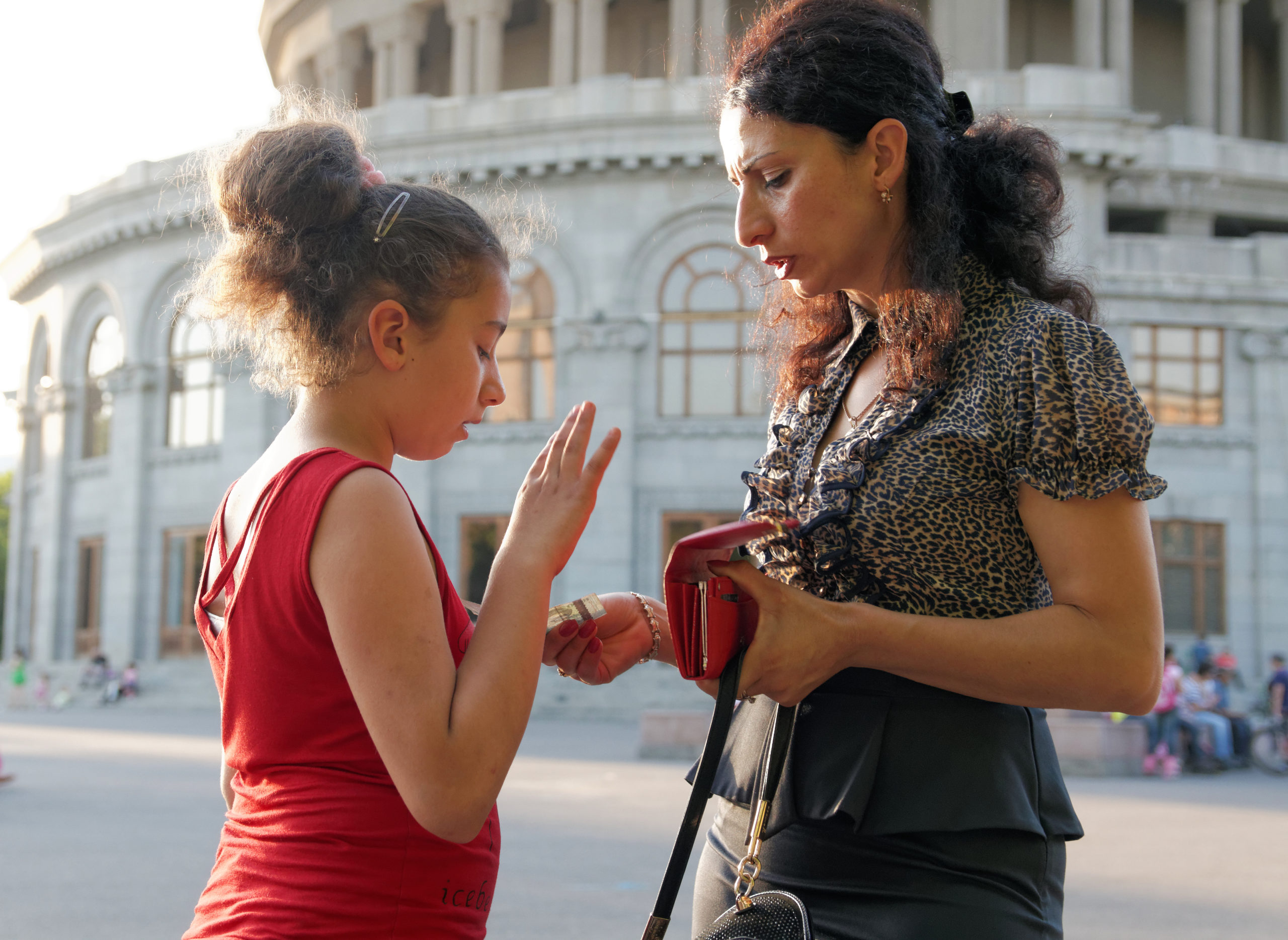
Supporting Your Child’s Mental Health: A Parent’s Guide
Understanding children’s rights to mental wellness and how to support them at every age
World Children’s Day celebrates the importance of children’s rights and safeguarding adequate physical, mental, spiritual, and social development for every child around the world.
This year, we’re focusing on a critical component of children’s rights that deserves our attention: mental health. Your child’s emotional well-being is just as important as their physical health, and as parents, you play the most vital role in supporting it.
Remember: You are your child’s first teacher and most important advocate. This guide will help you understand and support your child’s mental health journey.
📊 What Parents Need to Know
Recent research reveals significant challenges facing Canadian families:
50%+More than half of parents report that their children between ages 6-17 have needed help with emotional or behavioral problems in the past six months—a dramatic increase from 18.9% before the pandemic.
“Children’s mental health challenges have been exacerbated during the COVID-19 pandemic. Evidence shows that substance use, eating disorders, and anxiety and mood difficulties have increased.” — Plamondon, Racine & Vaillancourt
Understanding these challenges is the first step toward supporting our children effectively.
🧠 Understanding Children’s Mental Health
💡 What Is Children’s Mental Health?
Children’s mental health encompasses their emotional, psychological, and social well-being. It affects how they think, feel, act, handle stress, relate to others, and make choices.
Important Context: “Canada continues to fall behind regarding the mental health and well-being of children, ranking 30th out of 38 wealthy nations in UNICEF’s 2020 report card on the state of children and youth worldwide.” — Plamondon, Racine & Vaillancourt
Good mental health in childhood means:
- Reaching developmental milestones
- Learning healthy social skills
- Managing emotions and behaviors
- Recovering from difficulties and adapting to change
- Forming secure relationships
Common Signs That Your Child May Need Support
- Extreme tantrums that last longer or happen more often than expected
- Difficulty separating from parents or caregivers
- Regression in skills they’d previously mastered (toileting, sleep, language)
- Excessive fears or worries
- Significant changes in eating or sleeping patterns
- Difficulty playing with other children or extreme aggression
Remember: Young children communicate through behavior. What looks like “acting out” may be their way of telling you they need help.
- Persistent sadness, withdrawal, or loss of interest in activities they once enjoyed
- Excessive worry about school, family, or friends
- Frequent physical complaints (stomachaches, headaches) without medical cause
- Difficulty concentrating or completing schoolwork
- Changes in friendships or avoiding social situations
- Sleep problems or nightmares
- Talking about feeling “bad” or “worthless”
- Declining academic performance or loss of interest in school
- Withdrawing from friends and family
- Expressing feelings of hopelessness or worthlessness
- Excessive worry about performance or perfectionism
- Changes in eating habits or sleep patterns
- Irritability, anger, or mood swings
- Physical complaints without medical explanation
- Difficulty managing emotions or frequent emotional outbursts
⚠️ When to Seek Professional Help Immediately
Contact a mental health professional or your child’s doctor right away if your child:
- Talks about wanting to hurt themselves or others
- Has experienced trauma or significant loss
- Shows extreme behavior changes that last more than 2 weeks
- Refuses to eat or has dramatic weight loss
- Engages in self-harming behaviors
- Has severe anxiety that interferes with daily activities
Crisis Support: If you’re in immediate crisis, call 988 (Suicide Crisis Helpline) or go to your nearest emergency department.
👨👩👧👦 Age-Specific Support Strategies
Toddlers (Ages 2-3)
Building Security & Trust
Key Focus: At this age, emotional security comes from predictable routines and responsive caregiving.
- Consistent routines: Regular mealtimes, nap times, and bedtimes help toddlers feel secure
- Name emotions: Help them learn emotional vocabulary: “You look frustrated. The tower fell down.”
- Validate feelings: “It’s okay to feel sad when we say goodbye to grandma”
- Physical comfort: Hugs, holding hands, and lap time build security
- Simple choices: “Do you want the red cup or blue cup?” builds confidence
💬 Conversation Starters for Toddlers
Keep it simple and connected to their immediate experience:
- “I see you’re feeling big feelings. Let’s take deep breaths together.”
- “Your body is telling me you need a hug. Come here.”
- “That made you so happy! I saw your big smile!”
Preschoolers (Ages 3-4)
Developing Emotional Awareness
Key Focus: Preschoolers are learning to identify and express emotions appropriately.
- Emotion faces: Use pictures or mirrors to identify different emotions
- Feelings check-ins: “How does your body feel right now? Happy? Worried? Excited?”
- Story time discussions: “How do you think the character feels? Why?”
- Calm-down strategies: Teach deep breathing, counting, or using a calm-down corner
- Role play: Act out social situations and problem-solving
💬 Conversation Starters for Preschoolers
- “What made you feel happy today?”
- “Tell me about something that worried you.”
- “When you feel angry, what helps you feel better?”
- “Who did you play with today? What did you do together?”
Pre-K & Kindergarten (Ages 4-6)
Building Resilience & Social Skills
Key Focus: Children this age are developing friendship skills and learning to manage school routines.
- Problem-solving practice: “What could we try when this happens again?”
- Friendship skills: Practice sharing, taking turns, and using kind words
- School preparation: Talk about feelings about school, new experiences
- Coping strategies: Teach specific strategies for managing big emotions
- Celebrate efforts: Focus on trying hard, not just outcomes
- Special time: 10-15 minutes of undivided attention daily
💬 Conversation Starters for Pre-K/Kindergarten
- “What was the best part of your day? What was the hardest part?”
- “Tell me about a time you helped someone today.”
- “If you could change one thing about today, what would it be?”
- “What are you looking forward to tomorrow?”
Early Elementary (Grades 1-2)
Developing Independence & Self-Regulation
Key Focus: Children are building academic skills, managing peer relationships, and developing self-awareness.
- Daily check-ins: Create regular opportunities to talk about feelings
- Emotional vocabulary: Expand beyond “happy, sad, mad” to include nervous, disappointed, proud, frustrated
- Problem-solving steps: Identify problem → Brainstorm solutions → Choose one → Try it → Evaluate
- Growth mindset: “Mistakes help our brains grow!” “You can’t do it yet, but you’re learning”
- Peer support: Discuss friendship challenges and practice conflict resolution
- Celebrate uniqueness: Acknowledge what makes them special
💬 Conversation Starters for 1st-2nd Grade
- “If your day was a weather report, what would it be? Sunny? Stormy? Partly cloudy?”
- “Tell me about someone who was kind to you today.”
- “What’s something you’re proud of this week?”
- “Is there anything on your mind that you’d like to talk about?”
- “What was something that challenged you today?”
Upper Elementary (Grades 3-5)
Supporting Growing Independence & Self-Esteem
Key Focus: Older elementary children are developing complex social relationships, facing academic pressure, and forming their identity.
Expert Insight: “The most consistent assets of resilient children and adolescents are caring families, healthy schools and good peer relationships.” — Plamondon, Racine & Vaillancourt
- Active listening: Give full attention without immediately solving problems
- Validate complex emotions: “It sounds like you’re feeling both excited and nervous about the project”
- Encourage self-advocacy: Help them speak up for their needs
- Discuss peer pressure: Talk about making choices that feel right
- Mental health awareness: Normalize talking about stress, anxiety, and seeking help
- Healthy habits: Connect sleep, exercise, nutrition to mood and performance
- Media literacy: Discuss social media, online interactions, and digital wellness
💬 Conversation Starters for 3rd-5th Grade
- “On a scale of 1-10, how stressed do you feel about school right now?”
- “What’s something that’s been on your mind lately?”
- “If you could ask for help with anything, what would it be?”
- “Tell me about your friendships. What’s going well? What’s hard?”
- “What do you do when you feel overwhelmed?”
- “Is there anything you wish I understood better about your life?”
🎯 Universal Strategies for All Ages
No matter your child’s age, these approaches support mental health:
- Model healthy emotional expression: Let them see you name and manage your own emotions
- Create predictable routines: Consistency helps children feel secure
- Prioritize connection: Regular one-on-one time strengthens your relationship
- Limit screen time: Ensure adequate sleep, physical activity, and face-to-face interaction
- Stay calm during storms: Your regulated presence helps them regulate
- Celebrate small wins: Notice and acknowledge positive efforts and behaviors
Research shows: “Most mental health difficulties in early adulthood have their origin in childhood,” making early support and prevention critical. — Plamondon, Racine & Vaillancourt
🎉 Family Activities for Mental Health & Connection
These activities help build emotional awareness, strengthen family bonds, and support mental wellness across all ages.
Emotion Art Journal
Ages: All ages (adapt complexity) | Time: 15-20 minutes
What You’ll Need: Notebook or paper, crayons/markers, stickers (optional)
How It Works:
- Each family member draws or colors how they’re feeling today
- Younger children can use colors and shapes; older children can draw more detailed pictures or write
- Share your art and talk about the feelings represented
- Keep journals over time to notice patterns and celebrate positive moments
Why It Helps: Creative expression helps children (and adults!) process emotions they can’t always put into words. This activity normalizes talking about feelings and creates a safe space for emotional expression.
Gratitude Jar
Ages: 3+ | Time: 5 minutes daily, ongoing activity
What You’ll Need: Clear jar, paper strips, markers, decorations for the jar
How It Works:
- Decorate a jar together as a family
- Each day, everyone writes (or draws) one thing they’re grateful for
- Fold the paper and add it to the jar
- On hard days or at month’s end, read some notes together
Why It Helps: Research shows gratitude practices improve mood, increase resilience, and help children develop a positive outlook. This becomes a tangible collection of good moments during challenging times.
Feelings Check-In Chart
Ages: 2+ | Time: 2-3 minutes, multiple times daily
What You’ll Need: Poster board, markers, emoji stickers or drawings, clothespins or magnets with family member names
How It Works:
- Create a chart with different emotion faces (happy, sad, angry, worried, calm, excited, etc.)
- Each family member has a marker (clothespin or magnet)
- Throughout the day, move your marker to show how you’re feeling
- Check in together at breakfast, after school, and before bed
Why It Helps: Visual check-ins make emotions concrete for young children and open natural conversations. Parents can quickly identify when someone might need extra support.
Mindful Breathing Buddies
Ages: 2+ | Time: 3-5 minutes
What You’ll Need: Small stuffed animal for each person
How It Works:
- Lie down on your back with your breathing buddy on your belly
- Breathe slowly and watch your buddy rise and fall
- Try to make your buddy move smoothly and gently
- Count breaths together: breathe in for 3, out for 3
Why It Helps: Deep breathing activates the body’s relaxation response. This playful approach teaches children a powerful coping skill they can use anywhere, anytime.
Worry Time & Problem-Solving Box
Ages: 4+ | Time: 10-15 minutes, daily or as needed
What You’ll Need: Decorated box, paper, pencils
How It Works:
- Designate a specific “worry time” each day (not right before bed!)
- Children write or draw their worries and put them in the box
- During worry time, open the box together and talk about each worry
- Sort worries: “Can we do something about this?” vs. “Is this something we need to accept?”
- For actionable worries, make a plan together
Why It Helps: Contains anxiety by giving it a specific time and place. Teaches problem-solving skills and helps children distinguish between productive concern and rumination.
Feelings Charades
Ages: 3+ | Time: 15-20 minutes
What You’ll Need: Cards with emotions written or drawn on them
How It Works:
- Take turns drawing an emotion card
- Act out the emotion without using words
- Others guess the emotion
- After guessing, share: “When was the last time you felt this way?”
Why It Helps: Makes learning about emotions fun and interactive. Helps children recognize emotions in facial expressions and body language, building empathy and emotional intelligence.
Family Meeting & Rose-Thorn-Bud
Ages: 4+ | Time: 20-30 minutes weekly
What You’ll Need: Just your family and a comfortable space
How It Works:
- Gather weekly at a consistent time
- Each person shares:
- Rose: A high point from the week
- Thorn: A challenge or low point
- Bud: Something you’re looking forward to
- Listen without judgment; ask questions; offer support
- Problem-solve together if someone needs help with their “thorn”
Why It Helps: Creates a predictable forum for communication. Normalizes discussing both positives and challenges. Strengthens family connection and problem-solving.
Calm-Down Corner/Cozy Space
Ages: All ages | Time: 30 minutes to set up, ongoing use
What You’ll Need: Comfortable cushions, favorite stuffed animals, calming activities (coloring books, fidgets, books), maybe soft lighting or calming music
How It Works:
- Create a special space together where anyone can go when feeling overwhelmed
- Stock it with calming tools your child helps choose
- This is NOT a punishment space—it’s a self-regulation tool
- Model using it yourself when you need to calm down
Why It Helps: Gives children a safe place to regulate emotions. Teaching them to recognize when they need a break builds self-awareness and coping skills.
✨ Making Activities Work for Your Family
Remember: These activities should feel supportive, not stressful! Adapt them to fit your family’s unique needs, schedules, and personalities.
- Start with one or two activities and build from there
- Let children help choose which activities to try
- Make it playful—laughter and connection are the goal
- Be flexible with timing; shorter is often better than longer
- Participate fully yourself; your engagement matters most
🆘 Getting Help: Resources & Support
🚨 Crisis Resources – Available 24/7
If your child is in immediate danger:
- Call 911 or go to your nearest emergency department
- 988 Suicide Crisis Helpline: Free, confidential support 24/7
- Crisis Text Line: Text HOME to 686868
- Kids Help Phone: 1-800-668-6868 (call) or text CONNECT to 686868
Remember: “This pandemic has been described as a generational catastrophe, particularly for children and youth from equity-deserving groups, including First Nations, Métis, and Inuit children, children from racialized communities, gender and sexually diverse youth, and young people with disabilities.” — Plamondon, Racine & Vaillancourt
Every child, regardless of background, social status, or location, deserves access to high quality mental health assessment and support.
Finding Professional Support
Why Investing in Mental Health Matters: “Results show that the return on investment for every dollar spent on preventing and treating mental health difficulties in youth is $23.60. These investments not only lead to increases in well-being but are also good economic policy.” — Plamondon, Racine & Vaillancourt
- Talk to your child’s doctor: Your family physician or pediatrician can assess your concerns, rule out physical causes, and provide referrals
- Contact your child’s school: Schools often have counselors, social workers, or psychologists who can provide support and resources
- Check your health insurance: Many plans cover mental health services; find out what’s included
- Research local children’s mental health services: Look for clinics specializing in child and youth mental health
Document your concerns: Keep notes about specific behaviors, frequency, duration, and what you’ve tried. This helps professionals understand your child’s needs.
Understanding who does what:
- Child Psychiatrist: Medical doctor who can diagnose and prescribe medication
- Child Psychologist: Provides therapy and psychological testing; cannot prescribe medication
- Clinical Social Worker: Provides counseling and connects families with resources
- Licensed Professional Counselor: Provides therapy for children and families
- School Counselor/Psychologist: Provides support within the school setting
- Occupational Therapist: Helps with sensory issues and daily living skills
Often, a team approach works best, with different professionals supporting different aspects of your child’s needs.
With wait times sometimes exceeding 2.5 years for mental health services, here’s what you can do:
- Get on multiple wait lists: Don’t wait for one referral; pursue several options simultaneously
- Ask about cancellation lists: You might get in sooner if someone cancels
- Consider virtual/telehealth options: Online therapy may have shorter wait times
- Look for group therapy: Often available sooner than individual therapy
- Explore community resources: Some organizations offer sliding-scale or free services
- Request school-based support: While waiting for outside services
- Use self-help resources: Evidence-based apps, workbooks, and online programs
Finding the right fit matters. Consider asking:
- “What is your experience working with children my child’s age?”
- “What therapeutic approaches do you use?”
- “How do you involve parents in the therapy process?”
- “What can I expect in terms of progress and timeline?”
- “How will we measure whether therapy is working?”
- “What should I do if I don’t think it’s a good fit?”
Trust your instincts: If a therapist isn’t the right fit, it’s okay to keep looking.
Helpful Resources for Parents
📖 Books & Guides
- “The Whole-Brain Child” by Daniel Siegel
- “How to Talk So Kids Will Listen” by Faber & Mazlish
- “Raising An Emotionally Intelligent Child” by John Gottman
- “The Yes Brain” by Daniel Siegel
🌐 Online Resources
- CAMH (Centre for Addiction and Mental Health): Free resources for parents
- Anxiety Canada: Evidence-based tools and information
- Children’s Mental Health Ontario: Resource finder and support
- Mind Your Mind: Youth mental health resources
📱 Apps & Digital Tools
- Breathe, Think, Do (Sesame): For young children
- Smiling Mind: Mindfulness for families
- Stop, Breathe & Think Kids: Emotion management
- MindShift: Anxiety management for teens
👥 Support Groups
- Check local hospitals for parent support groups
- Online communities (NAMI, Parent Support Groups)
- School-based parent networks
- Faith-based community support
💚 Taking Care of Yourself
Expert Reminder: “The adults in children’s lives must be healthy and supported for children and adolescents to flourish. Resiliency is not ingrained; it is fostered by strengthening individuals, families and environments.” — Plamondon, Racine & Vaillancourt
Remember: You cannot pour from an empty cup. Supporting your child’s mental health starts with maintaining your own.
- Seek your own support through friends, family, or therapy
- Practice self-compassion; parenting is challenging, especially during difficult times
- Maintain your own healthy habits: sleep, exercise, nutrition, social connection
- Set boundaries and ask for help when you need it
- Celebrate small victories—progress isn’t always linear
The most consistent asset of resilient children is a caring, supported adult in their life. That’s you.
Take Action This World Children’s Day
Supporting children’s mental health requires action at every level—from individual families to national policy. Here’s how you can contribute:
In Your Home
Choose one activity from this guide to try with your family this week. Start small—even 10 minutes of focused connection makes a difference.
In Your Community
Talk openly about children’s mental health. Breaking stigma starts with conversation. Share resources with other parents who might need support.
In Your Child’s School
Ask about mental health resources and support. Advocate for increased school-based mental health services that make support more accessible.
At the Policy Level
Contact your elected representatives to support increased funding for children’s mental health services. Research shows every dollar invested returns $23.60 in benefits.






